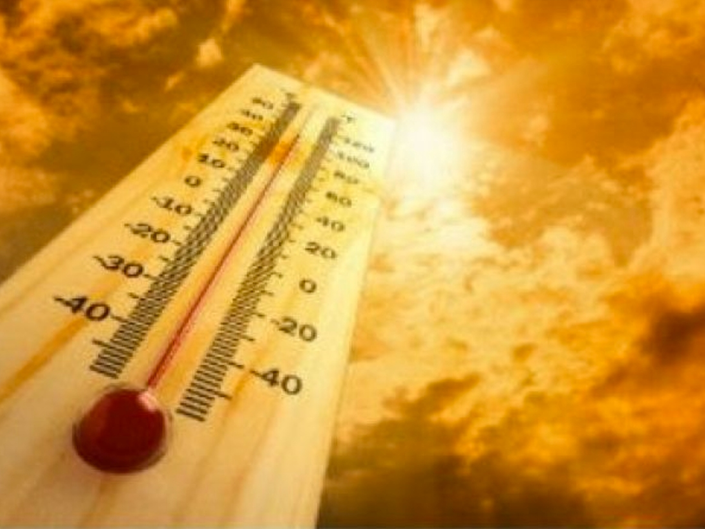India is witnessing it’s worst ever heat wave with 4 cities in northern India: Churu, Banda, Allahabad & the national capital Delhi having registered temperatures in excess of 48°C in the last week. A heat-wave is declared when temperature stays at 45° for 2 days in a row. Churu in Rajasthan has already crossed 50° twice in the last 1 week while Delhi saw a maximum of 48° yesterday – the highest ever in the capital in June.
There is growing evidence of impact of global warming on the Indian subcontinent. 11 of the 15 hottest summers in history of India (since 1901 when maintaining of temperature records started) have occurred since 2004. Last week, 11 of 15 hottest places on Earth were in India – the rest 4 were in neighbouring Pakistan. Since 2010, more than 6000 people have died from heat waves in the country, as per estimates given by then health minister Dr. Harsh Vardhan in the previous Lok Sabha. According to the last report of the UN’s Intergovernmental Panel on Climate Change (IPCC), released in October’18, India will be among the worst hit countries that may face wrath of calamities like floods and heatwaves, and reduced GDP due to increasing global warming.

The Indira Gandhi Institute of Development Research has reported that if the predictions relating to global warming made by the IPCC come to fruition, climate-related factors could cause India’s GDP to decline by up to 9%; contributing to this would be shifting growing seasons for major crops such as rice, production of which could fall by 40%. Around seven million people are projected to be displaced due to, among other factors, submersion of parts of Mumbai and Chennai, if global temperatures were to rise by a mere 2 °C.
The country is also facing severe drought. As of May 31, more than 43.87% of the country was reeling under drought, according to the Drought Early Warning System, a real-time drought monitoring platform.
The pre-monsoon rainfall (March 1-May 31) in 2019, was the lowest in 65 years. The post-monsoon rainfall (October-December) was deficient by 44% in 2018 as per data from the India Meteorological Department. There was a deficit of 9.4% in the the southwest monsoon (June-September) in 2018.
Water levels in India’s 91 major reservoirs reduced to 20% of their capacity on May 30. This is lower than the levels last year and is also less than the average levels in the past decade.
80% of districts in Karnataka and 72% in Maharashtra are hit by drought and crop failure. 8.2 million farmers in these two states are struggling to survive. The water supply in four reservoirs supplying water to Chennai dropped below 1% of their capacity, causing an acute water crisis, which shut down Chennai’s metro system.
Let us look into the exact impact of this drought at the ground level.
Here are reports from Palghar district in Maharashtra. In the Talasari Taluka there are villages in the rocky areas where ground water hardly exists. In this area typically there are groups of small villages in close proximity. Each small village has around 30 to 35 families. The household size on an average is around 5 to 6. So typically there are around 180 – 200 people staying in each of these villages.
In a very good monsoon season, there is sufficient availability of water in the bore wells of these villages. Typically, each small village get around 2000 litres of water in the entire day, which translates into 10 litres of water per person on an average. This water is used for drinking, cooking, bathing, washing utensils and so on.
In this drought season for the last 3 months, water level is almost 150 feet below the ground level. There are only few bore wells in the entire area which has water. Typically, each village gets around 200 litres of water per day that too only one time. So there is only 1 litre of water available per person per day. This has to be used for all activities. This has been the condition in majority of such small villages.
Given this situation, it is clear there is no water available for agricultural purposes also. All the people have to look for non-agricultural labour activity for sustaining their livelihood.
The situation is similar across India as the country experiences an acute water crisis. There is no respite in sight anytime soon as the southwest monsoon this year, responsible for 80% of India’s rainfall, is projected to be delayed and below normal in both North India and South India.
India recently saw one of the most bitterly fought elections in it’s history, that saw the incumbent BJP led NDA alliance return to power with a dominant mandate. Tackling climate challenge should be a top most priority for the new government in the coming years. The government on May 31, promised the provision of piped drinking water to every household by 2024 under a “Nal Se Jal” scheme. The mission will be undertaken by a newly formed Jal Shakti ministry.
Very significant and informative article. Great analysis of ground realities regarding the dangers of climate change in this sub continent.
LikeLike
A good narratives of Fact-based reality
LikeLike